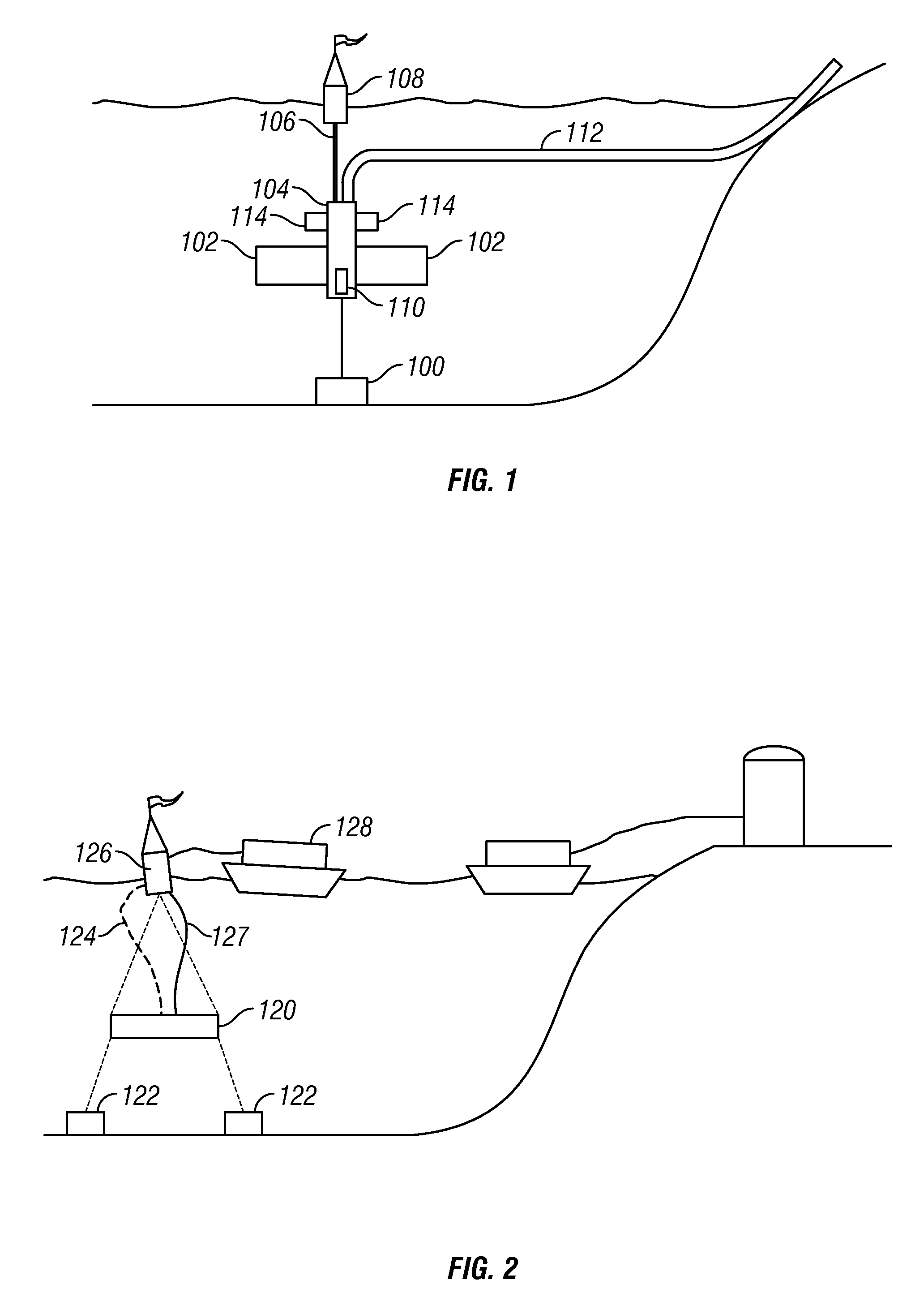[0007]A highly efficient and innovative process for desalination of
seawater and the purification of surface and
groundwater is provided. The process uses the
hydrostatic pressure of a body of water to drive a
reverse osmosis process to remove, e.g., dissolved salts or a filtering process in
fresh water bodies to screen out unwanted constituents such as viruses and
bacteria. The process is advantageous in its
elimination of systems that would be otherwise necessary in a conventional desalination
plant or in a conventional
water treatment plant, in that it allows efficient use of
hydrostatic pressure to facilitate
reverse osmosis or other
filtration processes. In preferred embodiments, a Depth Exposed Membrane for
Water Extraction (DEMWAX™) module is provided that can be suspended from a
floating platform, tethered to the bottom, or otherwise positioned at a depth wherein the pressure is sufficient to produce
potable water or water of reduced dissolved salts content from seawater via reverse
osmosis. In other preferred embodiments, a DEMWAX™ module can be provided with
nanofiltration membranes and used to screen contaminants from surface or ground water.
[0022]In an embodiment of the first aspect, the membrane module is configured to be submerged to a depth of at least about 7 meters, and is further configured to substantially avoid entrainment of aquatic life as permeate passes from the first side of the membrane element to the second side of the membrane element.
[0031]In a fifth aspect, a
filtration system is provided for producing product water from feed water, the system comprising at least one reverse
osmosis membrane, wherein the membrane is configured to permit passage of water therethrough while restricting passage therethrough of one or more ions dissolved in the feed water, wherein the membrane is configured to be submerged at a depth in a body of feed water containing the ions dissolved therein, wherein the depth is at least about 141 meters, wherein a first side of the membrane is configured to be exposed to the feed water at a pressure characteristic of the submerged depth, and wherein a collector on a second side of the membrane is configured to be exposed to a pressure characteristic of
atmospheric pressure at
sea level, whereby, in use, a pressure differential across the membrane drives a reverse
osmosis filtration process such that a permeate of a reduced dissolved
ion concentration is obtained on the second side of the membrane, wherein the membrane is situated such that, in use, at least one of gravity and current effectively removes a higher density concentrate away from the membrane.
[0048]In a sixth aspect, a filtration system for producing product water from feed water is provided, the system comprising at least one
nanofiltration membrane, wherein the membranes is configured to permit passage of water therethrough while restricting passage therethrough of at least one constituent, wherein the membrane is configured to be submerged at a depth in a body of feed water containing the constituents, wherein the depth is at least about 6 meters, wherein a first side of the membrane is configured to be exposed to the feed water at a pressure characteristic of the submerged depth, and wherein a collector on a second side of each of the membrane is configured to be exposed to a pressure characteristic of
atmospheric pressure at a surface of the body of feed water, whereby, in use, a pressure differential across the membrane drives a filtration process such that a permeate having a
reduced concentration of the constituent is obtained on the second side of the membrane, wherein, the membrane is situated so as to prevent
surface tension from inhibiting substantially
free flow of feed water across the first side of the membrane.
[0067]In an embodiment of the eighth aspect, the membrane module is submerged to a depth of at least about 7 meters, and is further configured to substantially avoid entrainment of aquatic life as permeate passes from the first side of the membrane element to the second side of the membrane element.
 Login to View More
Login to View More  Login to View More
Login to View More 


